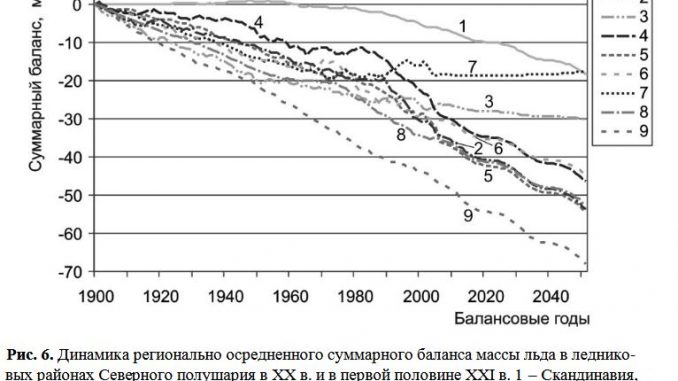
Valery Fedorov1,2,
Ekaterina Fedorova1,2,
Alim Zalihanov1,3
1Lomonosov Moscow State University, Moscow, Russia
2E-mail: fedorov.msu@mail.ru, 3E-mail: bulungu@yandex.ru
Abstract. The study presents the results of an estimative forecast for the individual components of environment in XXI century. The forecast is based on a regression model and insolation contrast range as a predictor. It was determined that the level of the World Ocean by the end of the current century will reach the value of 476 mm (relative to the beginning of the XXI century). The raise comparatively to 2020 will be 168 mm. Average annual area of the sea ice in the Northern Hemisphere since 2020 to 2100 will decrease by 3.39 million km2 or by 29.4%, the minimal one – by 5.65 million km2 or 77.1%. By 2050 comparatively to 2018 decrease of the sea ice area in Arctic Ocean will be 18.3% for the average annual area, 10.1% – for the maximal, and 60.3% – for the minimal area.
On average, for the nine glacial regions of the Northern Hemisphere, the reduction in the ice mass balance from 1900 to 2050 is estimated at 42.9 m of water equivalent (w.e.). From 2020 to 2050 on average, for the glaciers covered by balance observations in the Northern Hemisphere, the reduction in ice mass is expected to be 8.8 m w.e.
Key words: estimative forecast; regression model; insolation contrast range, World Ocean level; area of the sea ice; glacier mass balance
Acknowledgment
The work was carried out in accordance with the state budget themes “Evolution, current state and forecast of development of the coastal zone of the Russian Arctic”
